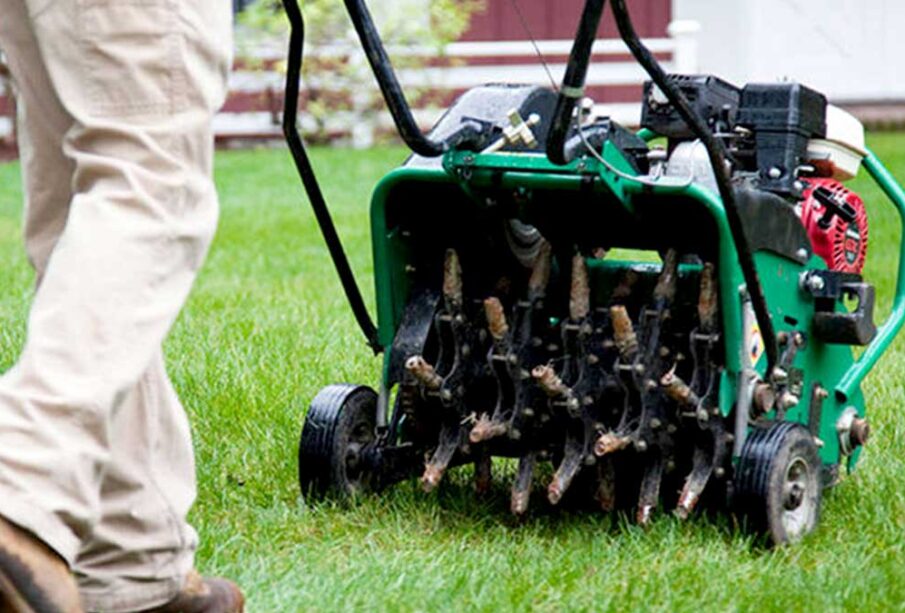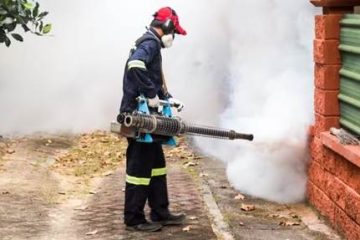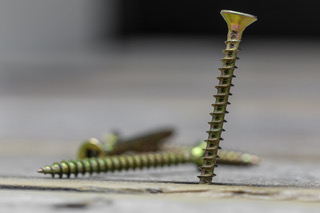Transform Your Lawn with Expert Lawn Aeration Services: A Simplified Guide

The Science Behind Lawn Aeration: Why Your Grass Craves It
Understanding Soil Compaction and Its Effects on Your Lawn
Soil compaction occurs when soil particles become packed down tightly, reducing the pore spaces that allow air, water, and nutrients to flow freely. This can be caused by heavy foot traffic, machinery, or even the natural settling process over time. Compacted soil hinders root penetration, leading to stunted growth and an unhealthy lawn. The primary effect of soil compaction is limited root expansion, which can compromise the plant’s ability to absorb resources essential for its vitality. Grass that is deprived of adequate aeration may exhibit browning, thinning, and increased susceptibility to diseases and pests, as well as overall poor vigor. Understanding the mechanisms of soil compaction can empower homeowners to recognize early signs of lawn distress and act promptly, setting the stage for effective interventions.
The Role of Air and Water in Promoting Healthy Root Growth
Healthy grass must access air and water, the two fundamental elements for robust root development. Aeration is vital in alleviating soil compaction, thereby increasing the exchange of gases and moisture beneath the soil surface. Roots rely on oxygen for respiration, and when aeration is poor, grass suffers from oxygen deprivation. Simultaneously, proper water penetration becomes a concern; water may run off rather than soak into compacted soil, leading to dry patches. Through aeration, we create space for both air and water to permeate the soil, which absorbs and directs nutrients to the roots. The result is not just a greener lawn; it’s an actively thriving ecosystem that promotes deeper roots and robust plant health, preparing the grass to withstand drought conditions and pest invasions.
How Aeration Transforms Your Lawn’s Ecosystem
Aeration is not merely a physical process; it is a transformative event that revitalizes the entire ecosystem of your lawn. By pulling out cores of soil and leaving them on the surface, you facilitate the introduction of new microbes and beneficial bacteria into the soil mixture. This enhances the microbial activity that promotes decomposition and nutrient cycling, contributing to a richer soil profile. Furthermore, the holes created by aeration serve as gateways for beneficial earthworms, which aerate the soil on a different level and assist in nutrient distribution. With correct aeration practices, a lawn evolves into a resilient environment that can self-repair and flourish. Importantly, incorporating regular aeration within your lawn care routine establishes a basis for a sustainable ecosystem that improves through continual feedback and adaptation processes over the years.
Choosing the Right Aeration Method: Manual vs. Mechanical
The Pros and Cons of Hand-Aerating Tools for Small Spaces
Hand-aerating tools, such as garden forks or specialized aeration shoes, can be effective for small spaces and residential lawns, offering a degree of control that mechanized options may lack. The primary advantage of manual aeration is cost; these tools are generally affordable and can be utilized by homeowners without hiring professional services. Additionally, hand-aerating provides the user with the opportunity to focus on specific areas of concern requiring immediate attention. However, this method can be labor-intensive and inefficient for larger lawns, as it requires considerable physical effort. Manually aerating a vast area might lead to uneven distribution and insufficient soil penetration. For those managing petite sections of grass, though, the hands-on approach can yield satisfactory results when completed with care and attention.
Exploring the Power of Professional Aeration Equipment
For extensive lawns or larger-scale applications, mechanical aeration equipment becomes essential. Professional lawn aeration services recommend using professional-grade aerators, which are designed to penetrate deeper and remove significant plugs of soil efficiently. Their high operational speed provides faster coverage across large areas while ensuring consistent aeration patterns. The primary challenge lies in the cost associated with professional services or rental fees; nonetheless, the investment tends to pay off in terms of time saved and results achieved. Moreover, professional aeration equipment is often equipped to handle various soil conditions, thus mitigating the common pitfalls of manual methods. With proficient operation, you will benefit from a more robust lawn that thrives due to enhanced soil structure and aeration.
Is Spike Aeration Enough? A Deep Dive into Core Aeration
While spike aeration involves using a tool that punctures the soil surface to create holes, it often proves insufficient due to its inability to alleviate compaction effectively. By only puncturing the soil, spike aeration does not remove any soil or thatch, which can still hinder the vital passage of air, water, and nutrients. Conversely, core aeration, or plug aeration, extracts actual cores of soil from the ground, allowing for greater porosity and creating a more conducive environment for root growth. The benefits of core aeration are well-documented; studies have demonstrated that lawns aerated through this method exhibit healthier root systems, improved nutrient absorption, and enhanced drought resistance. To ensure your lawn receives optimal care, choose core aeration over spike methods, especially if you are dealing with severely compacted soils.
The Best Time to Aerate: Timing is Everything!
Seasonal Considerations: Spring vs. Fall Aeration Strategies
Understanding the optimal time to aerate is crucial for maximizing the benefits of the process. In general, fall aeration tends to yield better long-term results for most grass types. During the fall, temperatures are cooler, and the increased moisture levels foster favorable conditions for recovery and growth. This timing allows grass to heal and develop strong root systems before facing the stresses of winter and the resurgence of summer heat. Conversely, spring aeration can serve as a viable alternative for warm-season grasses, as it preps the lawn for robust growth during peak growing seasons. Nonetheless, be cautious; early spring aeration might coincide with the onset of weeds germinating and competing for resources. Strategically timing your aeration based on seasonal cues is fundamental to establishing a resilient lawn.
Climate Influences: When Weather Conditions Favor Aeration
Climate plays a vital role in determining the right time for aeration. Ideally, aeration should occur when soil moisture levels are adequate; excessively dry or saturated soils negatively impact the aeration process. Moist soil allows for easier penetration, enhancing the efficacy of aeration while mitigating resistance against equipment and tools. Thus, regions with well-defined wet and dry seasons may find optimal aeration windows that differ from areas with more uniform rainfall patterns. Moreover, consider local temperatures; if daytime temperatures are consistently above 75°F, the stress placed on newly aerated lawns may lead to weaker recovery rates. Monitoring weather forecasts and working within your specific climate conditions creates the foundation for informed scheduling of aeration efforts.
Signs Your Lawn is Crying Out for Aeration: Key Indicators
Recognizing the signs that your lawn requires aeration is critical for timely intervention and restoration. Common indicators include surface water pooling after a rainstorm, dry patches exhibiting difficult water absorption, and visible thinning or browning grass. Additionally, if you observe an increase in weeds, it may signify that your grass lacks the vitality to compete with invasive species. Over time, the presence of excessive thatch or compacted soil, both of which compromise the health of your lawn, may become quite apparent through malformation in your grass’s growth. If you find that areas of your lawn struggle to thrive despite consistent care practices, it is imperative to consider aeration as a solution to restore the balance needed for a flourishing lawn.
Post-Aeration Care: Nurturing Your Lawn Back to Life
Fertilization Tips: Maximizing the Benefits of Aeration
Post-aeration care plays a pivotal role in ensuring that your lawn reaps the benefits of the aeration process. One of the first steps involves implementing a fertilization strategy tailored to the needs of your grass type. Applying fertilizer immediately after aeration can yield fantastic results, as the nutrients can more effectively penetrate the soil, settling deeply into the root zone. However, it’s crucial to choose the right fertilizer; opting for slow-release options enables sustained nutrient delivery over time. It is also essential to take soil tests to understand nutrient deficiencies and pH levels before fertilizing. This allows for adjustments that cater to your lawn’s specific needs. In doing so, you’ll ensure that your grass recovers quickly and vigorously in the aftermath of its aeration experience.
Watering Wisely: The Do’s and Don’ts After Aeration
Watering is another critical aspect of post-aeration care. Immediately after aeration, it is advisable to water your lawn thoroughly to help settle the soil and facilitate the distribution of nutrients. However, overwatering can be detrimental, leading to soggy conditions which can suffocate roots and promote fungal diseases. A general rule of thumb is to provide about one inch of water per week, including rainfall, after the aeration process. It’s also smart to monitor emerging grass blades; if there are signs of wilting or if the lawn begins to tan, it may indicate a need for increased irrigation. Establishing a balanced watering schedule will not only support recovery post-aeration but will also contribute to the long-term health and resilience of your lawn.
Long-Term Lawn Health: Incorporating Aeration into Your Maintenance Routine
To fully harness the benefits of aeration, incorporating it into your regular lawn maintenance schedule is paramount. Many experts recommend aerating your lawn annually, but the specific frequency may vary depending on soil conditions, grass type, and the level of traffic your lawn endures. Monitoring your lawn’s performance over time will allow you to determine the right schedule that fits its unique needs. Additionally, combining aeration with other best practices such as overseeding, balanced fertilization, and effective watering regimes creates a holistic approach to lawn care. Through dedication and routine care, you will gradually improve the overall health and appearance of your lawn, fostering an environment where vibrant green grass thrives and enriches your outdoor space.











